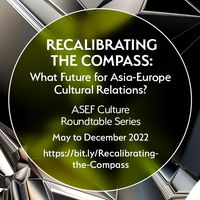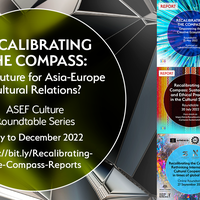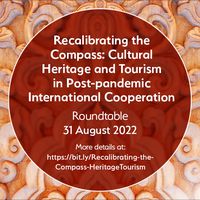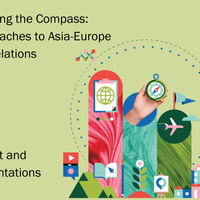Recalibrating the Compass: Cultural Heritage and Tourism in Post-pandemic International Cooperation – Roundtable #4 - Report
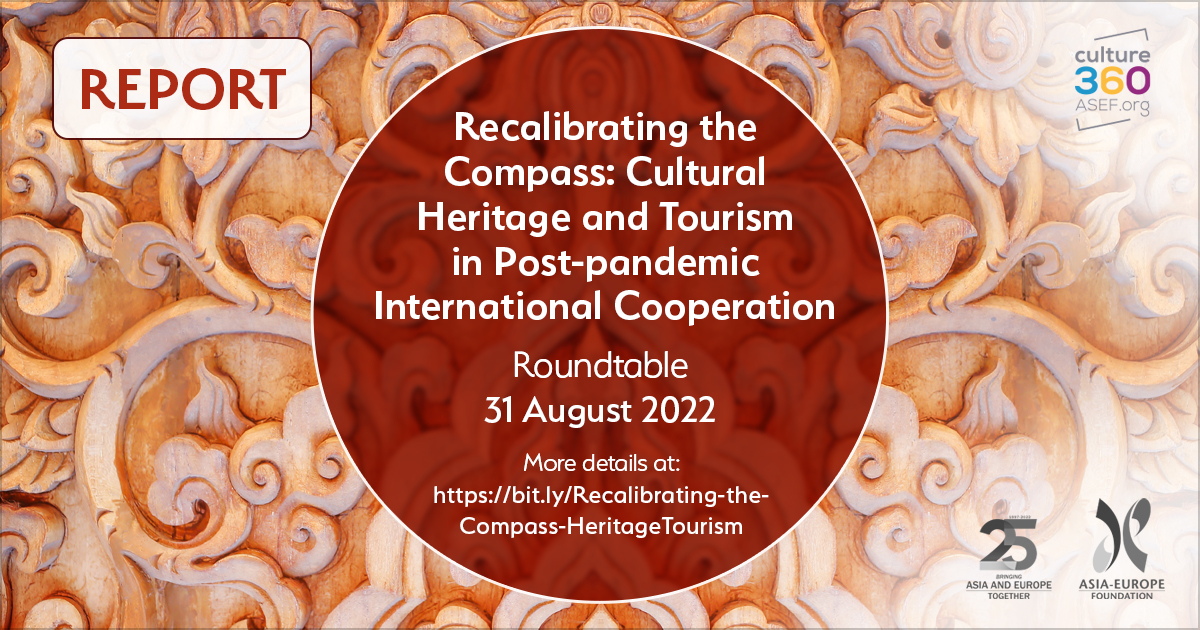
In 2022, on the occasion of the 25th anniversary of the Asia-Europe Foundation (ASEF) and following the global impact of the Covid-19 pandemic, ASEF has launched a series of online roundtables entitled Recalibrating the Compass: What Future for Asia-Europe Cultural Relations? The series aims to examine current challenges and identify ways to develop new, more relevant and resilient forms of support for Asia-Europe cultural collaboration.
The fourth roundtable, Recalibrating the Compass: Cultural Heritage and Tourism in Post-pandemic International Cooperation, took place on 31 August, gathering 10 experts from across Asia and Europe. Facilitated by Dr Magali-An Berthon, textile historian, documentarist and postdoctoral fellow at the Center for Textile Research, University of Copenhagen, the session addressed a diverse range of themes, including connections between cultural heritage and tourism, the place of local communities, diversity and inclusion in cultural heritage, digitisation, ethical and fair aspects of international collaboration in the field of heritage. The discussion touched also on how the Covid-19 pandemic has impacted cross-national exchanges and what new opportunities may arise in the post-pandemic context. This short report outlines some of the main arguments presented, the themes that emerged, and a few examples identified by participants.
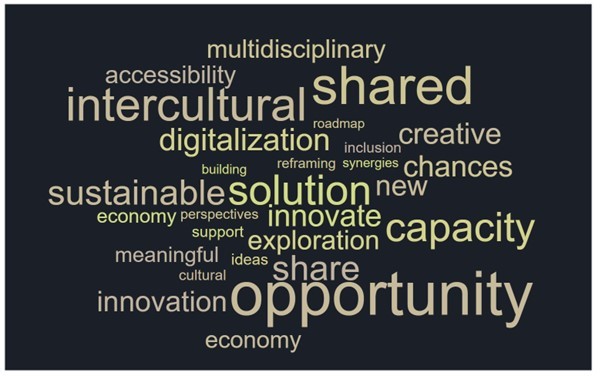
Community engagement as intrinsic to cultural heritage
The participation and inclusion of communities in heritage preservation, promotion and management should not be seen as an option, but rather as a precondition for the relevance and sustainability of both tangible and intangible heritage. While local communities living near a heritage site or who have held and transmitted intangible heritage across generations are particularly significant, the notion of ‘communities’ can be understood in a broader sense, including distant groups as well.
Reflecting on community engagement in the post-Covid context implies being particularly sensitive to vulnerable groups, such as the elderly. They have been deeply affected by the pandemic, both in health terms and because of the subsequent increase in digital exchanges, which requires new skills. At the same time, from the perspective of heritage, older people remain very important because of the knowledge they hold, which should be properly recognised and documented. The set of videos produced by George Town World Heritage Incorporated in the context of the “George Town in the New Normal” project is a good example of this as it recognises cultural heritage practitioners while strengthening their digital skills.
Another way in which heritage institutions contribute to building and engaging communities is the exploration of collections as vehicles for intercultural dialogue. The Chester Beatty Library, Dublin, which holds an extensive collection of works from Europe, the Middle East, North Africa and Asia, is recognised as a contributor to intercultural dialogue in Ireland and internationally, through its exhibitions as well as its intercultural learning programmes.
Tourism accelerates processes and makes challenges visible
The centrality of communities in heritage management gains importance in the face of tourism because tourism accelerates social, economic and cultural change and, alongside the opportunities it brings, it also engenders risks. Therefore, designing sustainable management strategies that consider community needs and consider potential risks is essential. This was visible before Covid-19, as urban areas around heritage sites experienced gentrification and forced neighbours and traditional trades to leave. The pandemic has made other threats visible: in many places, particularly in Asia, it has shown that what was perceived as a symbiotic relation between the inflow of tourism and heritage preservation could quickly vanish, threatening the heritage preservation and having negative impacts on local communities.
In this context, it seems necessary to rely less on tourism and strengthen collaborations with other fields, including the creative sector. It is also important to strengthen local embeddedness through awareness-raising in education and the transmission of living heritage. The collaboration between Penang State Government, Malaysia, the Aga Khan Trust for Culture and Think City in the development of the North Seafront of the George Town World Heritage Site is a good example in this regard, as it develops a long-term vision which balances local community and visitors’ interests.
While fostering alternative approaches is necessary, an observation of recent developments in Europe shows that tourism will quickly return to pre-Covid trends, generating similar threats to those of the past. Key questions that policymakers and heritage and tourism stakeholders should consider here include how to diversify tourism attractions, the importance to lead visitors to less-frequent sites, and how to protect local communities in the face of threats such as gentrification and the loss of authenticity that may often come with the rise in tourism.
Broadening heritage and cross-sector alliances
As mentioned earlier, several participants argued that strengthening collaboration with other sectors, as well as within the heritage and broader cultural sector, could be one way to foster resilience, as well as to innovate heritage approaches. In Viet Nam, last year’s Vietnam Design Week addressed the relation between tradition and contemporary design, demonstrating young designers’ interest in cultural heritage and enabling collaboration with makers and designers in Australia.
Cross-sector collaborations can also be fostered in higher education settings, as exemplified by the Creative Cluster at Sushant University, India, which integrates three schools addressing art and architecture, design, and planning and development respectively. Other alliances serve to strengthen the voice of cultural sectors and their advocacy – one such example being the establishment of CICADA in Cambodia as a representative body of, and advocate for cultural and creative sectors and for policies supporting cultural development.
The importance of strengthening international collaboration
International exchanges and collaborations are essential to museum and heritage professionals and organisations – as in other sectors, they provide inspiration and learning, enable collaborative projects and can help to address critical, uncomfortable issues that may otherwise be left aside at national level. The Covid-19 pandemic has had contrasting effects in this respect; it has limited the personal encounters which are essential to build trust, while opening new opportunities to connect online, as exemplified by the Recalibrating the Compass roundtable series, among many others. Yet it is also necessary to go beyond short-term, informal exchanges and, in the words of some participants, ‘formalise the informal’, generating spaces which others with similar stories and needs can also join.
Several examples were identified in response to this concern, highlighting in particular the importance of peer-learning programmes and networks which help to share solutions on the basis of common dilemmas and practical problems. The EU-funded Cultural Heritage in Action peer-learning scheme, connecting cities, regions and other heritage stakeholders, was mentioned, as was the Asia-Europe Museum Network (ASEMUS), which grew out of informal meetings and enabled personal conversations ‘around shared desires and mindsets’.
At another scale, for several years Japan and Italy organised informal meetings of heritage professionals, with two encounters per year, which allowed to develop trust and identify themes of common interest. Other examples of networking include the Asia-Europe Network of Cultural Heritage Professionals for Urban Development, which was active last decade and could be revitalised, and ichLinks, an online platform that provides access to information, and related activities, on intangible cultural heritage in Asia and the Pacific. By translating information into English, ichLinks partly helps to address the issue of translation, one of the traditional challenges in international collaboration
Making heritage institutions more transparent, responsible and inclusive
There is increasing awareness among heritage professionals and institutions about the need to improve accountability and social responsibility. This includes being transparent as per the origins of collections held in museums, as well as ensuring that cultural elements from minorities and disadvantaged groups are dealt with and presented in an ethical way by heritage institutions, avoiding the risk of cultural appropriation.
While several practical resources providing guidance in these areas exist (see e.g. this set of guiding questions on cultural appropriation developed by AORTA, NEMO’s recommendations for museums working on migration and cultural diversity, RCMC’s Words Matter guide on the use of sensitive terms, and EUNIC’s guidance on fair collaboration in cultural relations), it remains necessary to provide training and advice to many professionals and organisations in the field. A transformative step to address such sensitive issues may be to make heritage organisations more diverse and inclusive internally, particularly in leadership roles, something which also requires appropriate capacity-building and empowerment strategies.
Opportunities in the post-pandemic context: Innovation, digitisation and funding
In addition to generating challenges, the post-pandemic context provides also a new setting in which the heritage sector may be able to introduce innovation. One clear example of this is the digitisation of heritage, which opens opportunities to document diverse heritage assets - including both ‘classic’ heritage collections and those that have been neglected and risk deterioration or disappearance, such as cemeteries in urban areas -, increase audience accessibility to collections and narratives, generate international interest and develop collaborations.
Other opportunities may also arise in the context of public strategies and recovery funds established at regional, national and local level. One relevant example is the EU’s Recovery and Resilience Facility, under which several EU Member States have identified cultural heritage and other cultural and creative sectors as an investment priority. Meanwhile, the Roadmap for Tourism Recovery in Cambodia identifies cultural heritage and ‘Cambodianness’, which includes aspects related to identity and intangible heritage, as two of the pillars for recovery.

The 4th roundtable in the Recalibrating the Compass series illustrated yet again the wealth of experiences existing among cultural organisations in Asia and Europe that illustrate how heritage professionals and institutions are addressing the post-pandemic context. The examples presented in this article are just a few of the many that exist in this respect. The series will continue with a final roundtable in November and will culminate in a public webinar, where findings and recommendations from all sessions will be shared and discussed.
For more information about the series: https://bit.ly/Recalibrating-the-Compass
For the highlights of Roundtable #4: https://bit.ly/Recalibrating-the-Compass-HeritageTourism
ASEF would like to thank the following participants for their valuable contributions to Roundtable #4 – Cultural Heritage and Tourism in Post-pandemic International Cooperation:
| Dr Magali AN BERTHON - FACILITATOR | |||||
 | Dr David OCON |  | Dr NGUYEN Thi Thu Ha | |||
 | Erminia SCIACCHITANO |  | Fionnuala CROKE | |||
 | Izan SATRINA |  | Navin PIPLANI Director, Creative Cluster Sushant University (India) | |||
 | NG Boon Nee Manager, Cultural Heritage Research and Development George Town World Heritage Incorporated (Malaysia) | 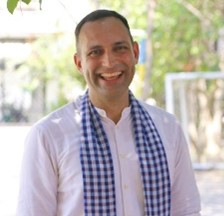 | Osman KHAWAJA | |||
 | Phina SO |  | Rapti MIEDEMA | |||
| Preeti GAONKAR - ASEF Senior Project Manager Asia-Europe Foundation (ASEF) Culture Department |
| Valentina RICCARDI - ASEF Acting Director Asia-Europe Foundation (ASEF) Culture Department | |||
Similar content
from - to
31 Aug 2022 - 31 Aug 2022
posted on
26 Jun 2023
posted on
04 Aug 2023




